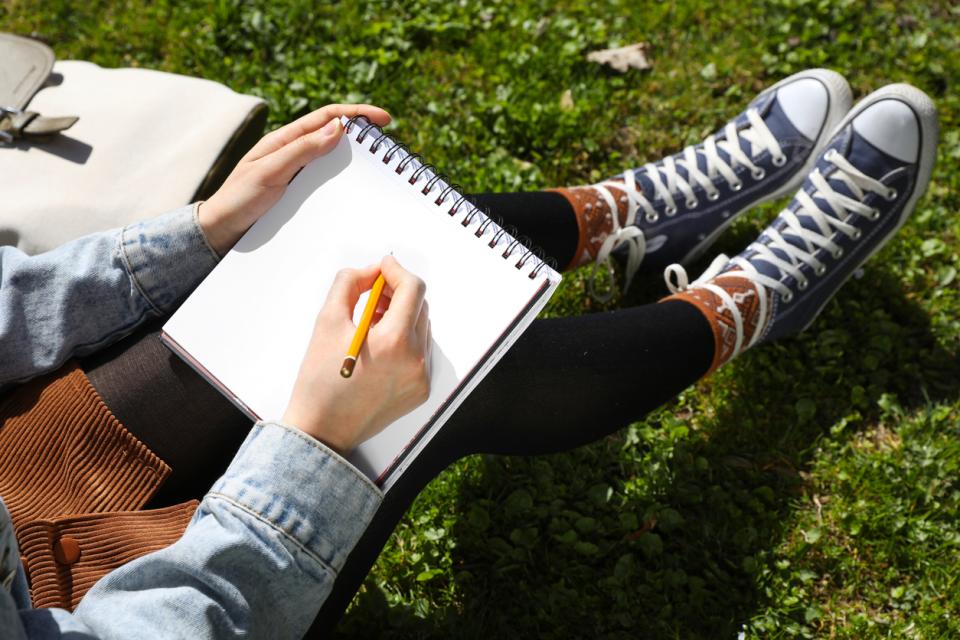More than half of undergraduate students currently report feeling disengaged from their education, and just as many say they have trouble retaining what they are learning. Following the many hardships of the pandemic, it’s not surprising that today’s students are struggling to stay engaged, so institutions and their faculty must quickly find ways to reconnect and re-engage with learners.
In the natural history course I teach at Kansas State University, I have found a deceptively simple solution for improving engagement – and it involves a tool naturalists have used in their work for centuries. From Charles Darwin to John Muir, field journals have long aided in collecting and cataloguing important discoveries, observations and reflections on nature. I ask the same of my students, sending them into the field armed not only with traditional journals but, more recently, iPads. The results have been surprisingly profound, and I think the lessons I’ve learned can be applied far beyond my field.
Here are three pedagogical lessons the experience has taught me that faculty can bring to their classrooms:
1. Personalise the learning experience
When my students are in nature, I do not expect them to use their field journals to record every minute detail they see. I’m looking to create a far more personal learning moment than simply being able to identify each songbird or lizard they discover. I want my students to immerse themselves in the environment and to deeply question how the experience is making them feel. Importantly, I give students a wide range of options when it comes to how they can express themselves, from painting and sketching to writing poetry. The goal is not to get a good grade − in fact, I no longer grade these field journal entries − but for students to have their eyes opened to the often-discounted beauty of the plains states and to share that beauty with others.
- Using gamification as an incentive for revision
- How to get students to play their part in the flipped classroom
- Your starter for 10: how can a TV quiz format help courses avoid extinction?
I recently had one student who, along with creating wonderful sketches, also wrote some incredible prose. In addition to writing about the flora and fauna around her, she would write about her son as well. She wrote how she loved sharing similar experiences in nature with him and how she hoped these natural spaces would still be there for him to enjoy when he grew up. This was so powerful to me in that not only was a student connecting with the natural landscape but doing it in such a personal and meaningful way that connected her to the content in a way I couldn’t do through a simple lecture. By giving students a sense of agency and choice in how they learn and by helping them connect with learning goals on an emotional level, educators can ensure better engagement within their courses.
2. Balance technology and traditional learning
In the aftermath of the online learning revolution brought on by the pandemic, it can be a challenge to determine what role technology should play. Educators shouldn’t use technology just for technology’s sake. At the same time, they shouldn’t shy away from digital tools, even in settings where they may at first seem out of place. The trick is striking the right balance, strategically using technology to enhance, not supplant or distract from, more traditional learning experiences.
This argument may seem especially ironic coming from someone who teaches natural history. Indeed, when I first told my students that I had used a recent teaching grant to purchase iPads to take into the field, even they were surprised. But once they had the opportunity to use the tablets in their journaling, attitudes began to change.
In the past, many of my students found completing field journals to be somewhat anxiety-inducing. Most do not consider themselves to be artists or writers, so the idea of creating poetry or a painting felt daunting. With iPads, students can easily hit the undo button on their work or bring up a fresh slate to try again with a click of a button. As a result, the anxiety students feel is greatly reduced, removing a common barrier to connection and reflection.
3. Link learning to the real world
One of the most important aspects of the field journal assignment is that it contextualises what students are learning in the classroom within the real world. Research shows that contextual and experiential learning boosts engagement, motivation and retention. My students and I are fortunate that, in our field, this means doing what naturalists have done for centuries: getting outside.
But field journals are hardly the only way to help students connect their learning to the world around them. For computer science courses, educators might teach programming by having students solve real-life technical challenges. Journalism courses have long relied on sending students off campus with the mandate of simply finding a story. No matter the subject, it’s important that institutions link learning to the real world and give students a chance to connect the classroom to their eventual careers. About 80 per cent of students now say that it’s important or very important for institutions to incorporate projects that mimic real-world work, but just 30 per cent of colleges and universities currently offer those kinds of projects.
Of course, field journalling is just one – very specific – approach to improving engagement and retention. The pedagogical concepts that undergird the assignment, however, can be applied to many other areas of study. Faculty must work to find their own unique ways to personalise, enhance and contextualise learning experiences for all students.
Michael Brunson is a teaching assistant professor and undergraduate teaching coordinator of park management and conservation at Kansas State University, US.
If you found this interesting and want advice and insight from academics and university staff delivered direct to your inbox each week, sign up for the Campus newsletter.




comment